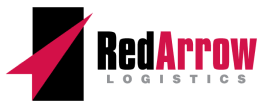The global COVID-19 pandemic has exposed some weak links among many companies’ supply chains over the 18 months. As we emerge from the pandemic, it is a good idea for businesses to re-evaluate their inventory levels. While the last year has presented inventory challenges for many companies, levels should return to more realistic levels. Keeping an optimal level of inventory keeps your business running productively and efficiently and helps to manage costs.
The Importance of Optimal Inventory Levels
The optimal inventory levels are the ideal quantities of products that are on hand. Optimizing inventory levels reduces the risk of shortages or paying too much for items that are not in stock. The following questions should be asked as business returns to pre-pandemic levels:
- – How much inventory is needed?
- – How to optimize inventory without running short?
- – Which SKUs are selling and which are not?
- – How to adjust current inventory post-COVID?
Inventory should be broken out by SKU, each of which will require a different optimal level of inventory based on demand. Optimal inventory levels can change quickly based on the situation or season. Balanced inventory levels indicate efficiency across the supply chain. When inventory levels are correct, cash flow, warehouse capacity and customer demand are all in check. Too much inventory comes with holding costs and too little inventory puts the supply chain in a shortage situation. Supply chain planning determines the best time to reorder more inventory as well as improve the accuracy at which it is reordered.
Best Practices
The following best practices will help maintain an appropriate level of inventory:
Inventory Lead Times
Production lead times are an important part of the inventory equation. The amount of time it takes for a supplier to take raw materials to finished goods after an order is placed impacts the inventory levels. Knowing how long it will take to make certain products allows for informed decisions about appropriate levels to be made.
Diversify Suppliers
As many companies learned from the COVID-19 outbreak, quickly finding alternative suppliers when their standard ones were on lockdown or delayed was the key to remaining functional. Those supply chains that do not have disruptions can meet changing market demand with an adequate supply of inventory.
Safety Stock
The last year has created a departure from just-in-time (JIT) inventory methods, which keeps inventory levels at an as-needed basis. Reassessing reordering points can help determine the safety stock level that your business needs now. Decide what level each SKU must be at before your re-ordering process kicks in with a reminder or an automatic purchase order.
Inventory Turnover Ratio
The inventory turnover ratio can help to determine an appropriate level of safety stock. The inventory turnover ratio can be found by dividing the annual cost of goods sold by the average value of inventory on hand. While the inventory turnover ratio will calculate the optimum level of safety stock, seasonality and peak times also need to be considered. Inventory days can be found by diving 365 days by the turnover ratio. Inventory days can then reflect the times of the high and low volume of sales. Demand forecasting allows for the best decisions to be made about future inventory levels based on historical information.
Determining Safety Stock Levels
The optimal level of safety stock is the difference between the average and maximum daily sales of a product and the average and maximum lead times for delivery of the product. This is a general formula but specifics about time of year and product cycles should also be worked into the calculation for the level of safety stock that is kept on hand. After a tumultuous year, monitoring sales more closely makes sense so an accurate level of safety stock can be established. Historical sales might not be the best indication given the past year.
Technology Delivers the Answers
Tracking inventory manually is both time-consuming and inaccurate. An inventory tracking system can give real-time access to stock levels to be able to allocate inventory, as necessary. And because inventory management is very complex, prioritizing data is important for almost every company. Technology and the data it produces can be used to evaluate the supply chain at every stage.
Red Arrow Logistics offers solutions to help your business keep inventory optimized, set reorder points, and track inventory in real-time to optimize your supply chain and reduce costs.
Your Trusted Partner
At Red Arrow Logistics, we provide expertise and white glove customer service with fast-growing, complex, and high-value supply chains. As the next-generation model of logistics companies, we offer tailored transportation and logistics solutions — from single shipments to complex over-dimensional and international orders.
Red Arrow offers the scale and scope of services including air, ocean, and ground transportation to meet the budget and schedule requirements of the largest and smallest companies alike. If we can be of assistance, please email us at info@redarrowlogistics.com or give us a call at 425-747-7914.





